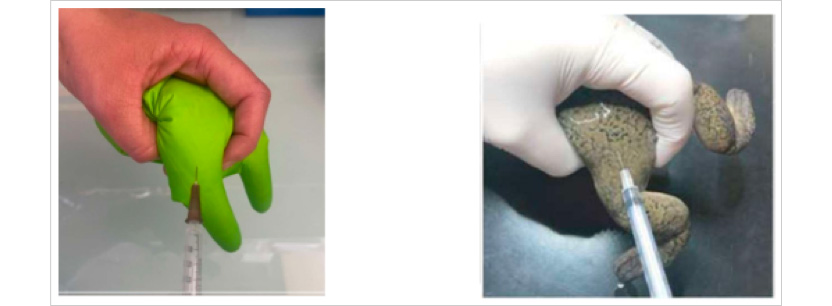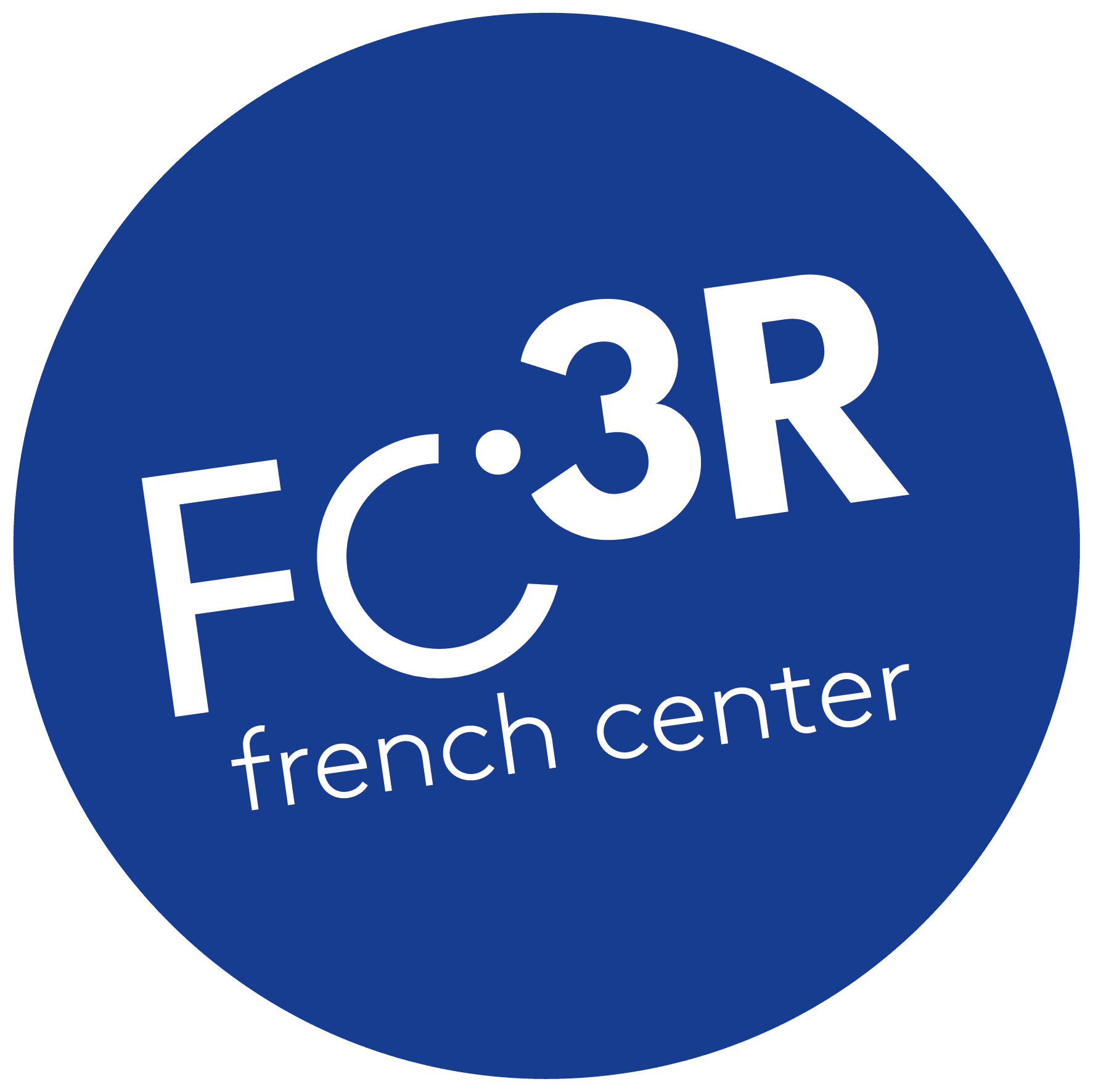
To learn more

XeMo is already being used for designer training sessions in Marseille (CNRS and CFE) and in Montpellier (CNRS).
Watch the XeMo manufacturing video: https://youtu.be/foGushKykEM
Meeting with Nathalie Malirat (Institute of Human Genetics), Marie-Elise Schwartz (TPS-AQUA), Aurélien Drouard (Institute of Functional Genomics), and Abdelkrim Mannioui (Institute of Biology Paris-Seine), who work with aquatic species and participate in regulatory training for animal experimentation. Together, they developed XeMo, an educational substitute Xenopus model to replace the use of live animals in training and practical learning.
What 3Rs issues have you encountered?
The increasing demand for regulatory designer-level training on aquatic models led us to increase the number of these specific training sessions to seven per year. As a result, the number of animals used also increased. The practical part of the training must allow participants to learn restraint, squeezing for egg collection, tagging, weighing, and injections on the Xenopus model. As trainers, it is our responsibility to ensure that these techniques are taught correctly and acquired by participants, even those - many of whom - are not destined to work with Xenopus models.
Handling and experimenting on animals also causes them stress, which can be even greater when experimenters are beginners. With experience, we also realized that some participants expressed opposition to experimentation on Xenopus and to their restraint, due to fear, disgust of the animal, and/or ethical reasons. These concerns and hesitations from the experimenter lead to inappropriate restraint of the animal, which consequently is subject to additional stress.
We therefore wanted to apply the 3R principle to this training by developing a substitute model for the use of Xenopus (Replacement) for training purposes, which allows us to limit the number of Xenopus used to achieve the same objective (Reduction) and to ensure the well-being of the Xenopus during learning (Refinement).
We also wanted to take the experimenters into account, by integrating the notions of "Responsibility" on our part as trainers, and what we called "Reassurance" for the experimenters regarding the animal, to allow them to improve their technique and gain confidence without causing stress to the animals. We were looking for a benefit for both the Xenopus and the experimenters, as the well-being of one positively impacts the other.
What have you done about it?
We therefore developed XeMo, the substitute Xenopus model, which anyone - in their animal facility, training program, university, or elsewhere - can set up easily, quickly, and at very low cost, using items commonly found in laboratories:
-
1 nitrile glove size M
-
1 nitrile glove size L (preferably green)
-
200 mL of tap water
-
and 0.1 g of Ponceau red dye (optional)
To make a XeMo, take a size M glove, tie knots in the thumb, middle, and little fingers and tuck them inside, then fill the glove with 200 mL of water (with or without Ponceau red) and tie a knot at the wrist. The index and ring fingers, now filled with liquid, resemble the posterior part of a Xenopus. Then slip it into a size L glove (with the thumb, middle, and little fingers also knotted and tucked in), and tie it at the wrist, leaving a little air between the two glove layers to mimic the space representing the dorsal lymphatic sac. The index and ring fingers, filled with liquid, now resemble the posterior part of a Xenopus. The XeMo is ready!

XeMo can be used to practice restraint, to correctly position the hand and fingers relative to the Xenopus' hind legs. This model can also be used to explain where and how much pressure to apply to obtain eggs by squeezing, which requires dexterity and practice to avoid harming reproductive function. In this case, we recommend drawing the cloaca and lateral line with a permanent marker on the glove to add anatomical landmarks. XeMo can also be used to practice injection and tagging. In both cases, a needle must be inserted under the animal's skin to inject into the dorsal lymphatic sac. If the needle goes too far, the injection can be lethal to the Xenopus. The technique and injection angle must therefore be precise. To use XeMo for injection practice, pierce between the two glove layers with the appropriate needle. If the injection goes too far, the second glove layer is pierced and the liquid flows out. Adding Ponceau red dye – optional - makes it easier to visualize this leakage in the event of a poor injection. XeMo can be used several times even when the inner glove is pierced, as pressure must be applied to check for liquid loss.
What results did you achieve?
By eliminating the need for Xenopus for training, XeMo significantly contributes to reducing their use: with eight fewer Xenopus per session and the increased number of annual regulatory training sessions, this represents a substantial reduction.
The use of XeMo also allows researchers to collect more reliable and reproducible data, enabling them to train repeatedly and acquire precise technical expertise without harming any animals while eliminating stress factors. According to end-of-training questionnaires, users report satisfaction rates of over 99%.
XeMo raises researchers’ awareness of the 3R principle and creates a more ethical and animal welfare–friendly working environment. Its ease of implementation and low cost make this model accessible to the entire scientific community, encouraging the dissemination of good practices and innovations regarding the 3Rs. It could thus be generalized to all aquatic training sessions, research animal facilities, and university training, and could even be adapted to model other species. The XeMo model represents a concrete step toward animal-friendly alternatives in science, in line with societal expectations.
